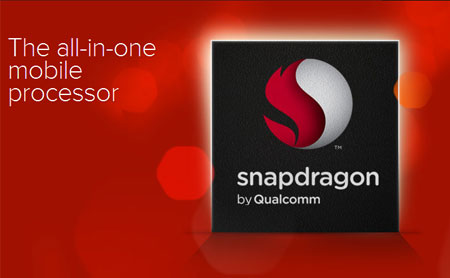
AMD’s HSA Foundation is getting bigger and bigger and the new members that are joining in are really powerful companies with heavy influence in the computing industry. The world’s largest fabless CPU designer, American company Qualcomm has joined HAS as a founder member.
Qualcomm’s ARM designs are now literally mopping the floor with their competition and even Intel’s might, power and money have not been able to properly challenge the SnapDragon family.
We knew for quite some while now that AMD’s APUs are heading towards a modular design where specialized ARM cores can be integrated on the chip’s die for specific functions and that AMD is therefore very interested in ARM technology.
The thing is that AMD wants to tap into the impressive floating point performance that lies inside its iGPUs and would like to do this seamless, with no special action from the user like Intel’s QuickSync requires.
If the FPU power inside the GPUs can be unleashed and perfectly melded with the CPU, then those FPUs inside today’s x86 or ARM cores could significantly be transformed while the performance skyrockets.
AMD’s HSA vision consists in a special programing tool library that will effectively create a layer between the programmer and the hardware.
Practically, the software programmer will write and code programs just like he used to or use very small modifications and simple optimizations, but the HSA layer will know how to best execute the code to take advantage of the hardware.
They are not saying that there won’t be any GPU compute work to do, but AMD is emphasizing on the fact that there is a much smaller effort involved in programming using the HSA method for HSA hardware than doing device specific coding like CUDA.
There is much sense in AMD’s initiative, as Intel practically agrees with them by also emphasizing that coding and porting for its Xeon Phi GPU compute architecture requires much less effort and investment than optimizing for CUDA.
Having huge and influential companies like Texas Instruments and ARM Holdings backing the initiative can only reassure AMD that HSA is going to make a serious impact on the industry.
The hardware will change, the software will change and all these changes will lead to a computing chip that uses the CPU and the GPU seamlessly, with little to no effort from the programmer's part.
Qualcomm knows that there is some serious FPU power inside the Adreno iGPUs used in its SnapDragon processors and the company wants to tap into that power as the most of it now remains unused when there is no 3D application active.
 |
Using the already existing GPU compute performance to achieve overall better FPU performance seems to be the obvious step and companies like ARM, Imagination Technologies, MediaTek, Samsung Electronics Ltd., Texas Instruments and now Qualcomm know they don’t want to be left out.
The interesting aspect is that, despite the fact thatAMD is an x86 company and mainly wants HSA to be developed for its main market, almost all the other members are large ARM developers.
On the other hand, AMD will take notes from the way its HSA partners will use the technology for their mobile designs and we might see a successful AMD mobile campaign in the following year, which will leave Intel’s Clover Trail and following technologies far behind.
Via: AMDs HSA Will Likely Influence ARM Qualcomm Joins the Group
Tidak ada komentar:
Posting Komentar